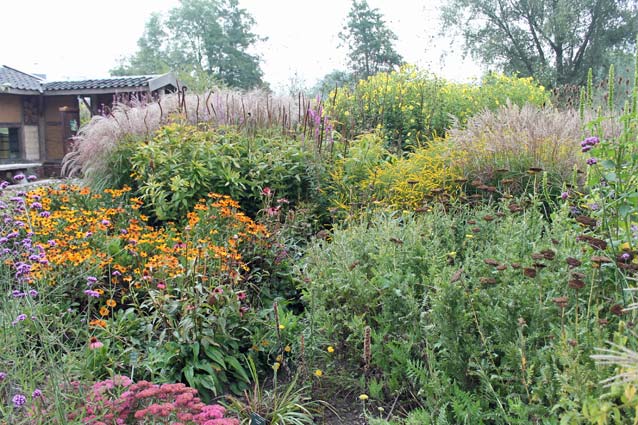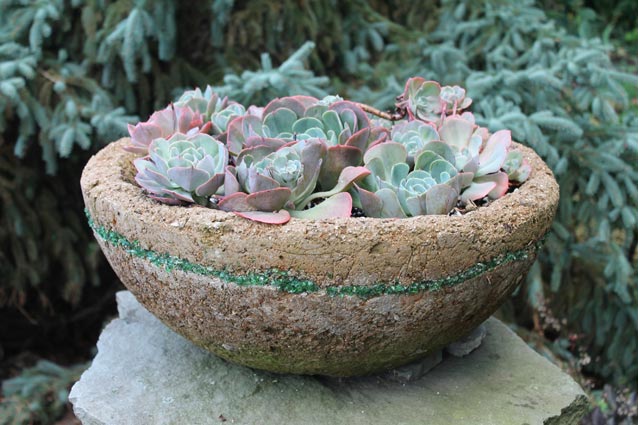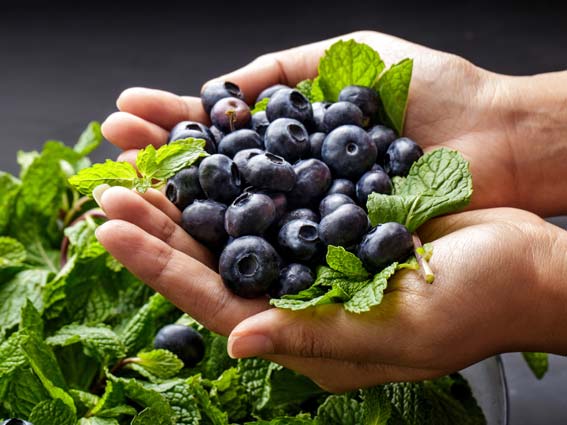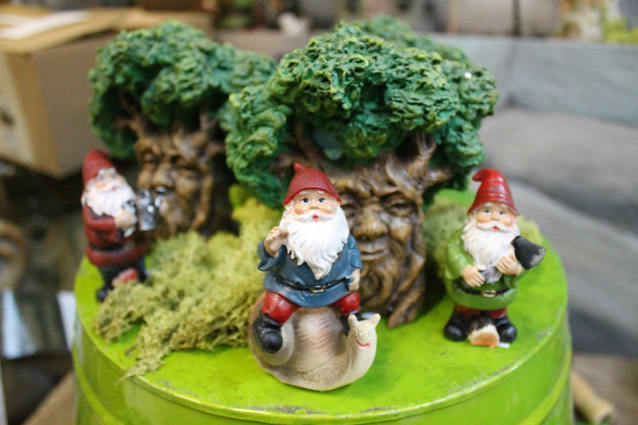How to Give Your Yard Four-Season Interest
Here are seven strategies for building a landscape looks good year-round by picking plants that change with the seasons or have interest in multiple seasons.

Naturalistic gardens like this are designed to “look” natural – and are usually very attractive to flying pollinators. © George Weigel
Fads and styles come and go in the garden each year. Here’s what growers, garden centers, and other gardening trend-watchers foresee being eight popular trends as the 2016 season unfolds:
“Naturalistic” landscapes. Apparently tiring of all of the mulching, trimming, and lawn-mowing in the traditional “neat” a.k.a.”manicured” landscape, people are turning to a more relaxed planting style that features densely planted swoops of low-care shrubs, grasses, perennials, and groundcovers. It’s not exactly letting nature do whatever it wants, but is rather a gardening/nature blend that some describe as “evoking nature.” The style also features smaller, if any lawns, a blend of native and low-care, non-invasive, non-native (exotic) plants, and beds planted in layers with plants arranged in intermingling colonies as opposed to neat rows.
Pollinator gardens. This trend caught on last year and looks to grow further in 2016 as word spreads about the dwindling fate of bees and other beneficial pollinators. Popular shrubs for pollinators include various species of viburnums, spring blooming crabapples and spicebush (Lindera sp.), buttonbush (Cephalanthus occidentalis) great for rain gardens, and late summer blooming summersweet (Clethra sp.). Gardeners are getting the message that they can help by reducing pesticides and adding pollinator-friendly perennials to their yards. Not only milkweeds (Asclepias sp.), and goldenrods (Solidago sp.), but other native perennials such as purple coneflower (Echinacea sp.), beebalms (Monarda sp.), and sneezeweed (Helenium sp.) are now much in demand, spurring breeders to bring superior cultivars to market. This trend is helping to fuel the fashion toward naturalistic landscapes.

More people are turning to containers for their plant and flower displays. Low-care succulent gardens like these are trendy and much admired. © George Weigel
Growing in containers is holding its own in popularity for two reasons. Yards are smaller that in years past, and nowadays more people (including renters) are doing much of their gardening on decks, patios, and balconies. Also, older gardeners are trying to cut down on heavy work, and find that growing in pots or other containers can provide plenty of interest and color without the labor of planting in-ground beds. Two new twists have emerged for 2016: growing low-care, drought tolerant succulents (cactus, sedums, echeverias, etc.), and the use of tropicals as eye-grabbers (elephant ears (Alocasia sp.), cannas, caladiums, and even dwarf bananas for instance).

Try your hand at growing berries at home.
Fueled by health benefits and the arrival of more compact varieties of blueberries, raspberries, strawberries, and other berried plants, more gardeners are trying their hand at growing their own bush fruits at home. These not only take up much less room than tree fruits such as apples and pears, but they’re easier to grow and require much less pruning and spraying (if any). Some of the more adventuresome are trying less common home-grown fruits, including figs, goji berries, gooseberries, and honeyberries. It is now common to see berry plants growing in pots as opposed to the ground.
Home-grown herbs. The other “hot” edible for 2016 is the whole category of herbs – popular because of health benefits, but also because they’re attractive and so useful in cooking. Home-grown herbs are far less expensive and more flavorful than fresh ones bought in the supermarket. Herbs that make caffeine-free teas (mints, chamomile, lemon balm, etc.) are especially popular, but gardener/ cooks and chefs are growing more of their own sage, oregano, rosemary, coriander, thyme, and basil as well as parsley. Many chefs across the country have their own herb gardens just to satisfy their needs in the kitchen. There are two other benefits: when you grow your own, you can select flavor variations that are not commercially available, and you know what sprays (if any) go on the plants.
Technology in the garden. With tablets, cell phones, apps, and other wireless technology so ingrained in our culture these days, it’s no surprise that some of it is showing up in the plant world. Wireless weather-monitoring units that beam real-time rain, wind, and temperature to your inside device are widely available already; apps that identify unknown plants, send water-reminder texts, and analyze the soil for nutrition and acidity levels are showing up as well.
Gnomes. Fairies and fairy gardens have been a hot gardening style for the past 3 years or so, but now it looks like gnomes might be elbowing their way to the forefront of the garden-magic world. Expect to see more gnome-madic figurines, including brownies and elves, showing up at garden centers this spring, to adorn those miniature gardens alongside “conventional” fairies. Gnomes’ shtick is that they’re adept at guarding buried treasures.

Gnome figurines are poised to take over more shelf space in garden centers this spring, elbowing into fairy territory in the miniature garden. © George Weigel
Garden “makers.” This refers not to making a garden, as in digging up a chunk of lawn. It refers to the increasing number of gardener/crafters who like to make and do as opposed to or in addition to just grow This trend is being fueled largely by so-called young, urban culturals or “yuccies” – the offspring of yuppies and hipsters. Reportedly they are as much into the experience as they are in the results. Besides making all sorts of crafts, decorations, and arrangements out of plant parts, some are growing plants as components and ingredients for their hands-on hobbies. “Drink gardens” for example are not uncommon. Young gardeners especially are trying hops (Humulus lupulus, a rather big and fast-spreading vine) to brew their own beer, while others are growing grapes for homemade wine, apples for home-made hard cider, and peaches, cherries, and other fruits as beer, wine flavorings, and ice cream toppings.